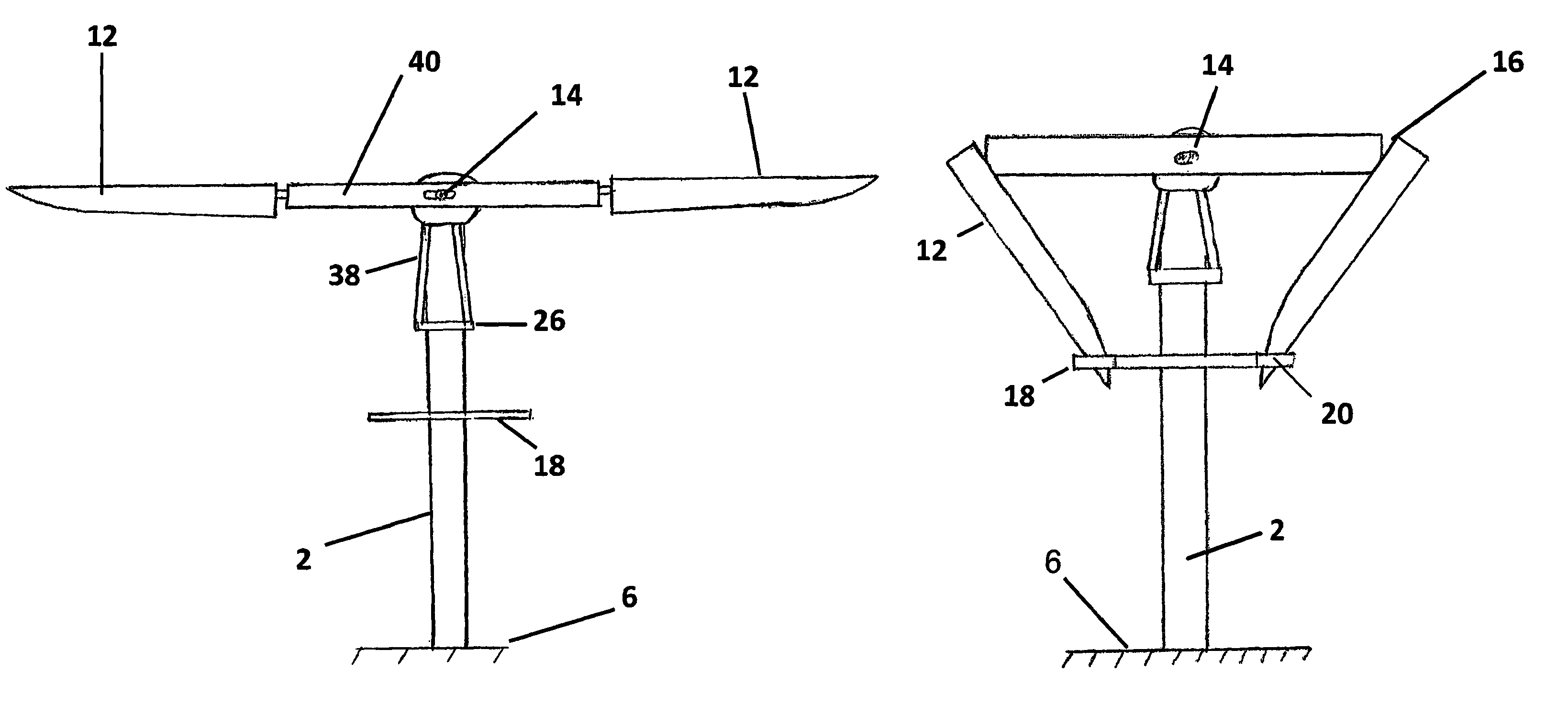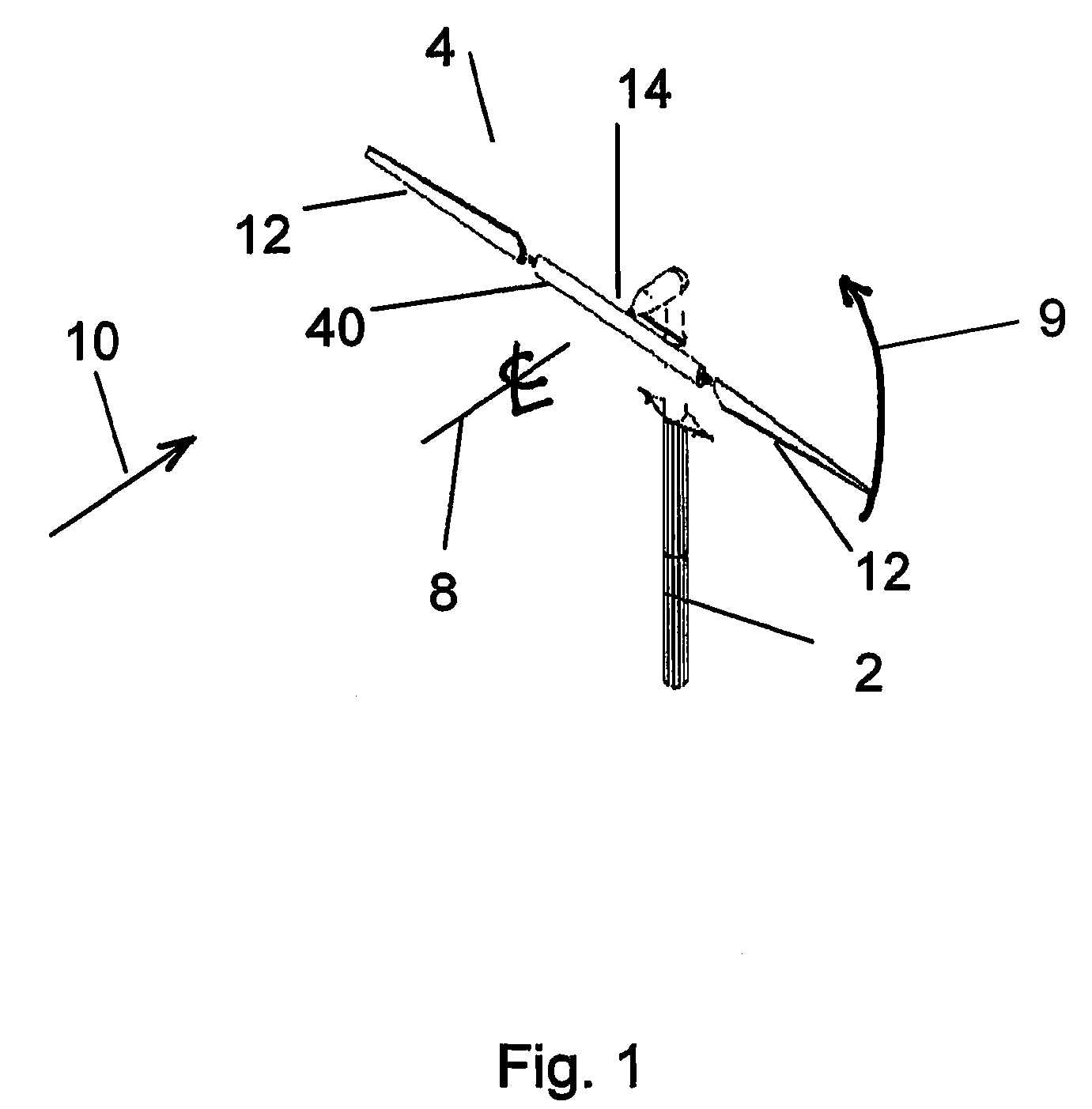Wind turbine
a wind turbine and wind power technology, applied in the direction of wind turbines, electric generator control, vessel construction, etc., can solve the problems of high load on the structure of wind turbines, high cost, and high load on wind turbines
- Summary
- Abstract
- Description
- Claims
- Application Information
AI Technical Summary
Benefits of technology
Problems solved by technology
Method used
Image
Examples
Embodiment Construction
[0068]The Invention is a wind turbine electrical generator for use in low wind conditions.
[0069]As shown by FIGS. 1-3, the wind turbine of the Invention features a tower 2 and a wind turbine rotor 4 supported by the tower 2 above the surface of a ground 6. The wind turbine rotor 4 has an axis of rotation 8 and is of the horizontal upwind type; that is, the axis of rotation 8 is generally horizontal with respect to the Earth and the wind turbine rotor 4 is located upwind of tower 2. The Invention also may be applied to horizontal downwind-type wind turbines.
[0070]The wind turbine rotor 4 includes turbine blades 12 and is configured to rotate in direction 9 in response to a wind 10. The wind turbine rotor 4 has a first position, illustrated by FIGS. 1 and 2, and a second position, illustrated by FIG. 3. In the first position, also referred to herein as the ‘deployed position,’ wind turbine blades 12 are radially arrayed about a hub 14 and configured for rotation in response to wind 10...
PUM
 Login to View More
Login to View More Abstract
Description
Claims
Application Information
 Login to View More
Login to View More - R&D
- Intellectual Property
- Life Sciences
- Materials
- Tech Scout
- Unparalleled Data Quality
- Higher Quality Content
- 60% Fewer Hallucinations
Browse by: Latest US Patents, China's latest patents, Technical Efficacy Thesaurus, Application Domain, Technology Topic, Popular Technical Reports.
© 2025 PatSnap. All rights reserved.Legal|Privacy policy|Modern Slavery Act Transparency Statement|Sitemap|About US| Contact US: help@patsnap.com



